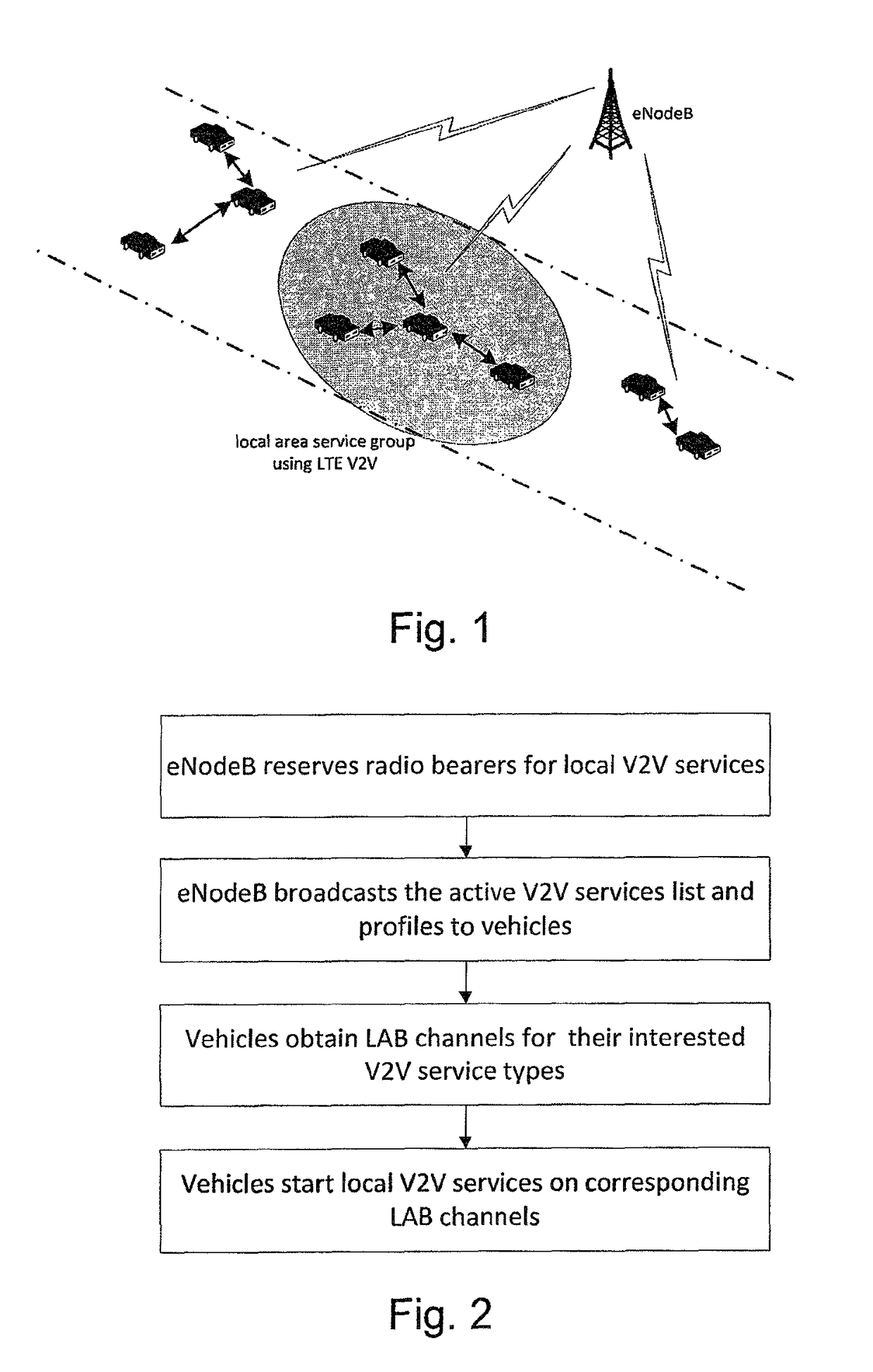Fast access in V2V communication services by dynamic resources allocation
a technology of dynamic resource allocation and communication services, applied in the field of vehicle to vehicle communication, can solve the problems of ineffective support of infotainment applications by specified local area communication and ad hoc-like networking, and the own shortage of infotainment applications, and achieve the effect of reducing burden and fast session setup
- Summary
- Abstract
- Description
- Claims
- Application Information
AI Technical Summary
Benefits of technology
Problems solved by technology
Method used
Image
Examples
Embodiment Construction
[0084]Herein below, certain embodiments of the present invention are described in detail with reference to the accompanying drawings, wherein the features of the embodiments can be freely combined with each other unless otherwise described. However, it is to be expressly understood that the description of certain embodiments is given for by way of example only, and that it is by no way intended to be understood as limiting the invention to the disclosed details.
[0085]Moreover, it is to be understood that the apparatus is configured to perform the corresponding method, although in some cases only the apparatus or only the method are described.
[0086]In order to achieve the fast request and response required in many V2V communication services, especially in safety related applications, a fast setup method and a corresponding apparatus for V2V local services based on LTE network are provided.
[0087]The method may include, as a first step:[0088]eNodeB reserves radio resources specifically...
PUM
 Login to View More
Login to View More Abstract
Description
Claims
Application Information
 Login to View More
Login to View More - R&D
- Intellectual Property
- Life Sciences
- Materials
- Tech Scout
- Unparalleled Data Quality
- Higher Quality Content
- 60% Fewer Hallucinations
Browse by: Latest US Patents, China's latest patents, Technical Efficacy Thesaurus, Application Domain, Technology Topic, Popular Technical Reports.
© 2025 PatSnap. All rights reserved.Legal|Privacy policy|Modern Slavery Act Transparency Statement|Sitemap|About US| Contact US: help@patsnap.com



